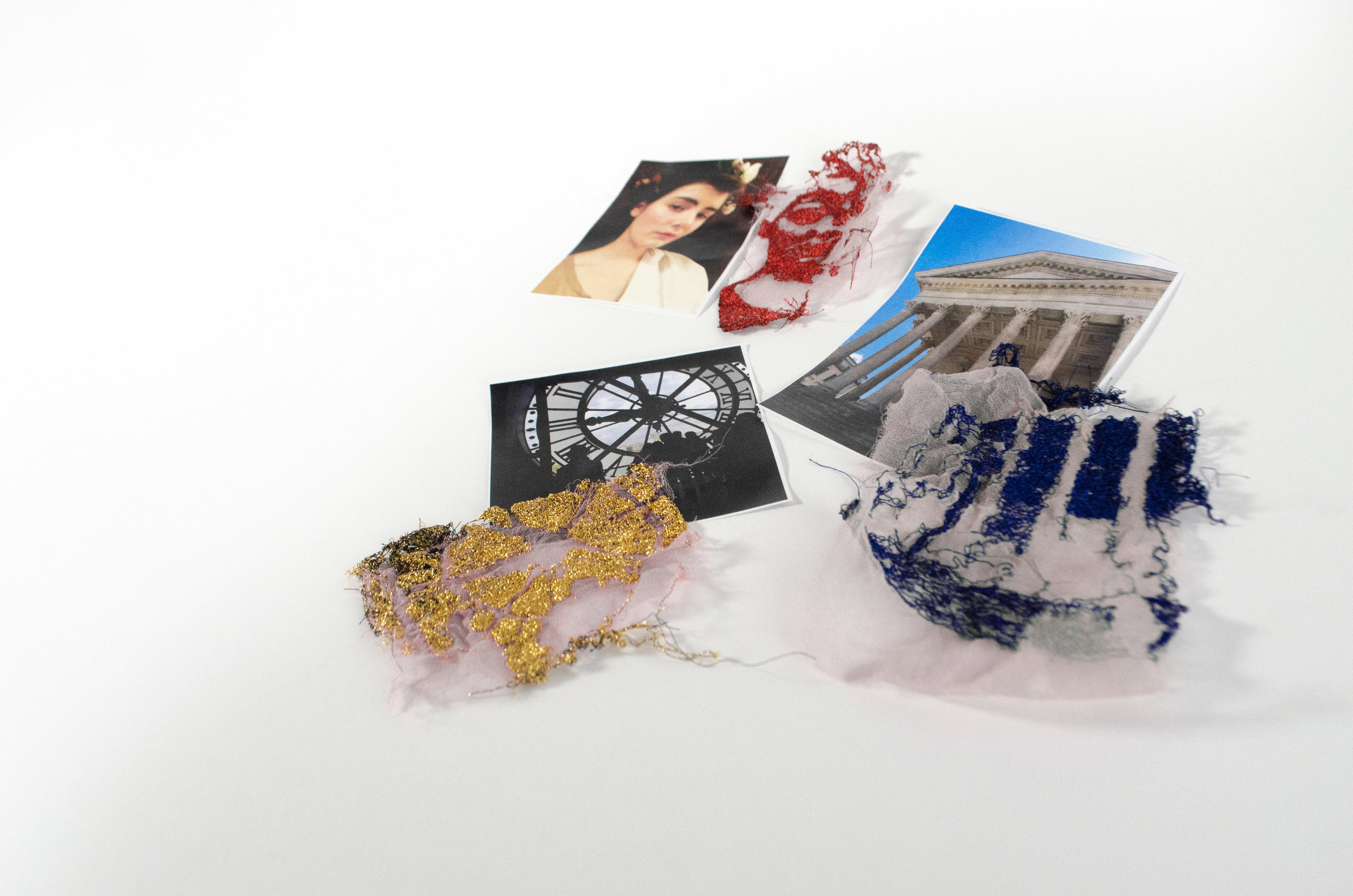Untitled (shroud)
Machine embroidery on silk, cast plastic. 2017
Relics often have shrouds--the shrouds themselves become invested with the power of the relic. I guess that sanctity is transitive, in some way. I’ve found that to be true... I can’t bring myself to throw away the shoes I wore in Paris. I can’t bring myself to throw away ticket stubs, even after they’ve been through the wash. Does the shroud then become its own relic? If it is invested with holiness, couldn’t it merit its own reliquary?
I find myself attached to the debris, the detritus, the echoes of memory, no matter how diluted or indistinct.
I’ve read that every time we access a memory, we edit it slightly. Every instance of recall distorts the original. What’s left is a facsimile, cut, edited and reconstructed in ways that are invisible and unknowable. Is it better then not to think of the past, to chance that it slips into the abyss, rather than allow the slow and insidious distortions that come with remembrance?
What of technology? Trusting my memory to my devices, I put my faith in silicon and binary rather than neurons and synapses--but files, too, can become corrupted.
I take a sick delight in destroying image files. It brings joy to my soul to save over original copies, to send images through filters and algorithms that render them unrecognizable, to pull things apart by their colors, to slice and reconstruct. What is left is incoherent data, relevant only in that it once resembled... something. Something important enough to merit immortalizing. I feed these chewed up echoes to machines, to see what remains of the original when they’re made material in polyester thread.
This shroud is embroidered in things that were once… something.




